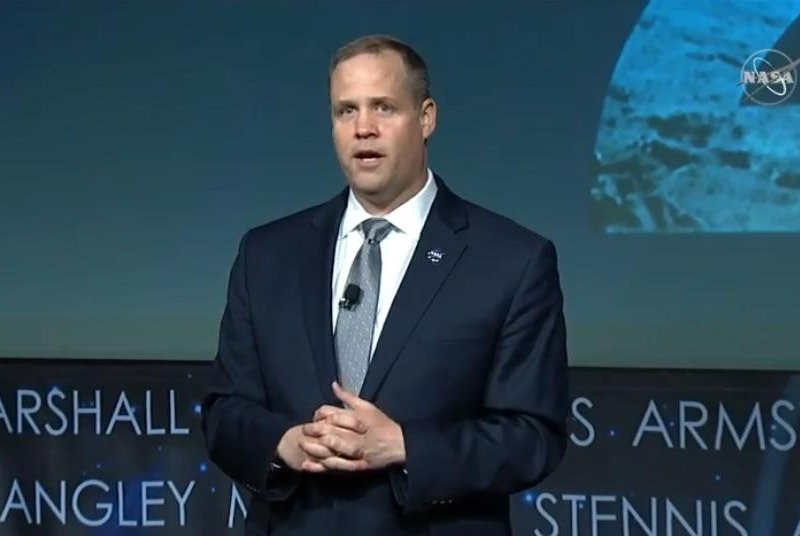1 of 2 | NASA Administrator Jim Bridenstine speaks Tuesday at a town hall meeting with agency employees about a proposed moon landing in 2024. Photo courtesy of NASA
May 15 (UPI) -- NASA Administrator Jim Bridenstine addressed doubts and naysayers in a town hall meeting about President Donald Trump's proposal to add $1.6 billion for the 2020 budget to advance a new moon landing in 2024.
The space agency's employees threw questions at Bridenstine and three other NASA officials Tuesday in a televised session.
"The answer is yes, that is absolutely what we need for the year 2020," Bridenstine said. "Now, we will need more additional resources for future years for sure."
Bridenstine also insisted the moon funding is dedicated only to that and is not being shifted from other priorities. "It's not coming from any part of NASA," he said. "That is, I think, a very strong indicator that this administration is committed to achieving the end stage in a bipartisan way."
He also addressed critics who said the Trump administration didn't consult with Congress about the funding, saying the president's budget is a proposal that Congress must now consider.
A national expert familiar with NASA's long history of budget battles agreed that $1.6 billion is enough to move toward a 2024 launch, but in 2019 dollars is a far cry from NASA funding for the first manned moon missions half a century ago.
Howard McCurdy, professor of public affairs at American University in Washington, said the United States spent roughly $21 billion leading up to the moment that Neil Armstrong walked on the moon. Using the same technology, that would translate into about $200 billion today.
"A low-cost return to the moon is feasible. It is not easy, but it is feasible," McCurdy said.
"Given what we have built and learned and with the cooperation of the NewSpace movement, we could probably return for $40 billion to $60 billion," McCurdy said. "The additional $1.6 billion sits on top of funds already available for exploration. So if NASA can devote existing allocations in the range of $8 billion, the U.S. is within shooting distance of a five-year goal."
Bridenstine took pains to say NASA isn't pulling money from science just to launch rockets.
He said science missions are vital to a long-range vision of space exploration that could create moon stations extracting oxygen from the rocky surface.
Theoretically, fuel could be pulled from water ice discovered in 2009 in craters at the moon's poles. With fuel and oxygen, a moon base would be a stable place to build and launch missions to Mars and the rest of the solar system, Bridenstine said.
NASA also is trying to evolve its work culture, said Bill Gerstenmaier, associate administrator for human exploration and operations for the space agency.
"We need to move and work more efficiently than we ever have before," he said. "We need to move with fast decisions, and make decisions, and recognize it may not be a perfect decision ... but move forward."
One of the big hurdles is determining exactly what system will be used to get to the moon. Bridenstine said NASA had been working on a platform or gateway that would orbit between the Earth and moon.
Astronauts would launch to the gateway and transfer to a lunar orbiter with a descent/ascent vehicle. But he said that is now being re-examined, and private companies are being asked make proposals.
"Maybe there's different architecture," Bridenstine said. "We're going to ask for industry's comments, how do they want to do this. We would be buying a service to take our astronauts down there and back to the gateway."
The NASA administrator has declined to provide dollar amounts for future funding requests. He said he is working on the 2021 budget request, but won't reveal that until 2020 is settled.
McCurdy said Congress is likely to express skepticism about the long-term costs of various moon-Mars initiatives, as it always has.
"Unlike the situation in 1961, there's no pressing imperative on the order of the Cold War," he said. "I suppose a low cost point exists that would make the initiative attractive, and $1.6 billion gets close to it. The downstream cost estimates are likely to be decisive."















